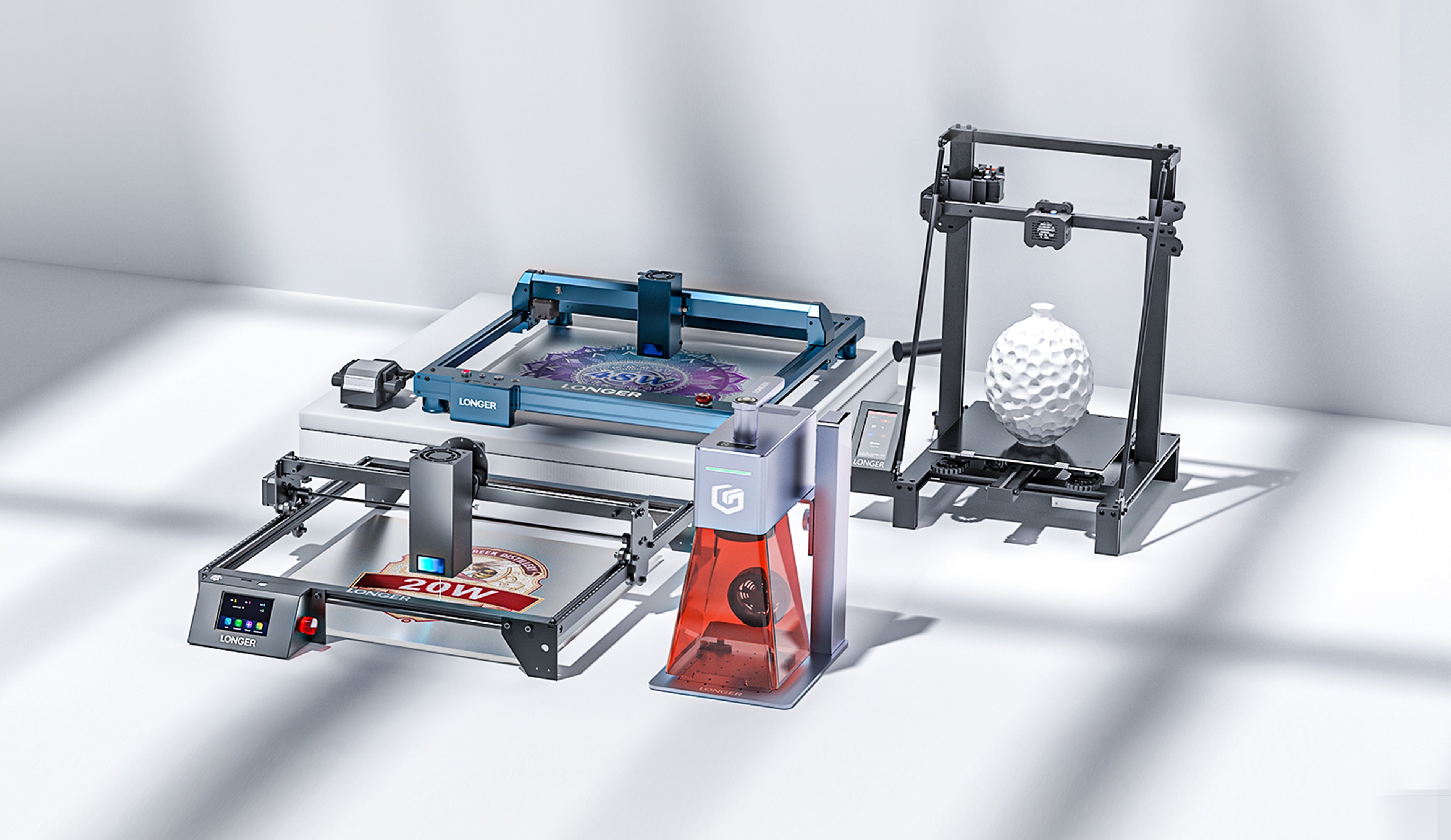Trending searches
Popular collections
Wagen ($0)
Wagen ($0)




ABSTRACT
Video Review by FlixMySwitch
Watch the full video: [Laser Safety, Non-laserable Materials, Safety Glasses, Enclosure, Smoke Removal & Air Assist]
I purchased the laser out of my own money. This is not a sponsored video. I have made a lot of custom improvements to the Ray5 series, including DIY new motherboards, nozzles, and many other things. At the invitation of LONGER, I organized my review and modification into a blog and authorized it to be published, this is the first article.
Introduction
Hello everyone, geek Andy here! Welcome to my in-depth series on laser diode engravers. After years of considering a purchase, I finally have my own laser engraver, the Longer Ray5 10W. For geeks, LONGER machines are 100% amazing. They are dedicated to creating powerful and sincere products, suitable for technology enthusiasts who pay great attention to parameters and cost-effectiveness. My first LONGER machine was the RAY5 10W, and I loved it so much that I now have a collection of RAY5 5W and 20W. Maybe in the future I will expand to the LaserB1 series, so let's wait and see!
While RAY5 10W not as powerful as CO2 lasers, this diode laser offers high engraving precision thanks to its smaller spot size. It can handle tasks like engraving and cutting thin wood up to around 6mm with ease, and it’s particularly effective on MDF and colored acrylics. Join me as I explore this tool in detail, experimenting, modifying, and pushing its capabilities to their fullest.
Safety Essentials
Safety is critical when using diode lasers like the Longer Ray5. Although these units are considered "low-powered" compared to industrial lasers, they are certainly not toys. Even a 0.5-watt laser diode can cause severe eye injury in an instant. Here are a few guidelines to follow:
1. Protective Gear: Always wear certified safety glasses when operating the laser.
2. Fire Risk: Keep a spray bottle and a CO2 fire extinguisher nearby, as well as a fire blanket for added safety.
3. Ventilation: Use effective ventilation or a smoke extractor to avoid inhaling harmful particles, especially when engraving or cutting materials that release fumes.
4. Toxic Fumes Warning:Laser cutting certain plastics releases extremely hazardous fumes. Materials such as ABS (found in LEGO bricks), nylon, polystyrene, and epoxy should never be used with a laser due to the risks. Even with strong ventilation, these materials release corrosive gases that can damage both your health and your machine. Always check the material's safety data sheet or conduct a burn test to ensure it is safe for laser use.
Diode Laser Specs:
The Ray5 operates with a 450nm wavelength laser focused into a fine spot of 0.06 x 0.06mm, allowing for precise engraving and effective cutting on certain materials. The Ray5 excels in engraving and can cut a variety of materials including:
Wood: Plywood, MDF, and untreated wood up to 4-6mm thick
Acrylic: Best results with darker colors as diode lasers do not cut clear acrylic effectively
Leather: Natural leather engraves well; synthetic leather is not recommended as it may release toxic fumes
Other Materials: Cardboard, terracotta, slate, and even certain metals can be engraved, though not all results will be consistent.
However, avoid materials like ABS, PVC, and polycarbonate. When laser-cut, these materials release toxic gases like hydrogen chloride and cyanide, posing a severe health risk.
Ray5 Features for Enhanced Performance:
Advanced Air Assist: Installing an air assist module helps clear smoke and debris from the cutting line, improving both the quality and depth of cuts. This is especially useful for tasks on wood and MDF, where precise cuts are essential.
Ventilation Requirements: Extracting smoke from the workspace is critical, particularly when cutting materials like plywood and MDF that release binding agents.
Tips for Clear Acrylic:Diode lasers like the Ray5 struggle with clear acrylic. However, you can work around this by applying coatings or using dark-colored backdrops to engrave designs. This allows you to illuminate acrylic pieces with LEDs, creating unique, glowing designs.
Upcoming Topics:
Expect future episodes on topics such as:
Beam Focus and Focal Length: We’ll dive into the details of laser focusing to optimize engravings and cuts.
Air Assist Options: Enhancing cut quality and depth by adding airflow around the laser path.
Material Testing: From plywood and MDF to stainless steel, we’ll push the Ray5 to its limits and discover what it can achieve.
The Longer Ray5 is a fantastic starting point for those entering the world of laser engraving and cutting. So, if you’re interested in the world of diode lasers, I invite you to follow along. Let’s make the most of this incredible machine and discover what’s possible together!
My goal with this series is to share everything I learn and explore with the RAY5. Together, we’ll discover which materials work best and learn how to maximize engraving quality, cut depth, and efficiency. It’s fascinating to see how materials absorb or reflect light differently, impacting the quality of cuts and engravings. This series is a two-way street. I encourage viewers to comment, ask questions, and share their own experiences. Although I’m an engineer by trade, I’m excited to learn alongside you.
For more insights, tips, and guides, check out my YouTube channel FlixMySwitch where you’ll find a complete video series with all the information you need to get started.
RELATED POSTS
!


